Either I have misunderstood or there is two sides of the coin of what I am trying to understand.
Obviously what i don't know about this topic is not tangible in terms of books or proper explanations in forums.
Lets get to the point, I have just discovered(if its true) that according to "some"(by all means possible experts) to improve transients all your doing is really cutting off or reducing the low end bass wavelengths from the extension. Which eliminates those frequencies and in turn gives you less overhang or better transients. Now this correlates to a bass myths article I read where its mentioned that "The fastest sounding bass is when there is no bass." Also, GedLee somewhere in this forum also mentions for bass reflex not to worry about the alignment or something along those lines.
Now in another forum someone mentions that group delay has not much to do with transients while I have read articles on how group delay does correlate with transients. I was under impression that the roll off of the transfer function is related to how the transients in the bass reacts? Now there telling me not to worry about this... I'm confused.
Now, I know there is no such thing as fast bass but there definitely is overhang. I have improved my subs from .707 to a .58 QTC and you can feel significantly less overhang.
Where I am going with this is lets put aside the transients for a bass cab or a subwoofer. If the above is true then by simply crossing over your PA cab with a sub woofer will improve transients to the PA cab right?. My question is, isn't designing the enclosure alignment important in knowing how the bass will react in terms of overhang regardless if the cab is being designed for the low end? For instance for a mid cab playing from 500hz and above and if we prefer better transients does the qtc play a role in the overhang? If the cab has nothing to do with long wavelengths then I would suppose QTC has no role right?(according to the above theory)
I know that many factors contribute to transients but if we stick to cab size and volume, I was so convinced that increasing port length would improve transients and in a closed box a larger box with a lower QTC will improve transients. Now, this theory is being put to the test.
Obviously what i don't know about this topic is not tangible in terms of books or proper explanations in forums.
Lets get to the point, I have just discovered(if its true) that according to "some"(by all means possible experts) to improve transients all your doing is really cutting off or reducing the low end bass wavelengths from the extension. Which eliminates those frequencies and in turn gives you less overhang or better transients. Now this correlates to a bass myths article I read where its mentioned that "The fastest sounding bass is when there is no bass." Also, GedLee somewhere in this forum also mentions for bass reflex not to worry about the alignment or something along those lines.
Now in another forum someone mentions that group delay has not much to do with transients while I have read articles on how group delay does correlate with transients. I was under impression that the roll off of the transfer function is related to how the transients in the bass reacts? Now there telling me not to worry about this... I'm confused.
Now, I know there is no such thing as fast bass but there definitely is overhang. I have improved my subs from .707 to a .58 QTC and you can feel significantly less overhang.
Where I am going with this is lets put aside the transients for a bass cab or a subwoofer. If the above is true then by simply crossing over your PA cab with a sub woofer will improve transients to the PA cab right?. My question is, isn't designing the enclosure alignment important in knowing how the bass will react in terms of overhang regardless if the cab is being designed for the low end? For instance for a mid cab playing from 500hz and above and if we prefer better transients does the qtc play a role in the overhang? If the cab has nothing to do with long wavelengths then I would suppose QTC has no role right?(according to the above theory)
I know that many factors contribute to transients but if we stick to cab size and volume, I was so convinced that increasing port length would improve transients and in a closed box a larger box with a lower QTC will improve transients. Now, this theory is being put to the test.
The whole purpose of the transient theory circling in audiophile circuits is to inject confusion and skew common sense reasoning. A worthy goal is to be satisfied with the end result. So, if one prefers thin sounding speakers then any lower Qtc value should be aimed for and then further adjusted by placing speakers more or less close to wall boundaries. Simulation tools can help visualize this sound pressure increase.
Transients can only come from the driver. e.i. how does it respond to electrical input in terms of accelerating/decelerating mass.
Common problems including overhang, 'heavy' bass, 'light' bass etc., are more usually associated with how the driver is deployed.
Common problems including overhang, 'heavy' bass, 'light' bass etc., are more usually associated with how the driver is deployed.
Transients can only come from the driver. e.i. how does it respond to electrical input in terms of accelerating/decelerating mass.
Common problems including overhang, 'heavy' bass, 'light' bass etc., are more usually associated with how the driver is deployed.
I understand this concept. But when you say "is associated with how the driver is employed" can you please elaborate?
Low Q driver open baffle, good transients 🙂
Only for the speaker itself.
The listening room has orders of magnitude more influence, and that is what you actually hear.
Just look at the transient response of speakers vs the RT-60 times in a room.
0.5 sec at 50Hz is 25 full wave repetitions before the signal is 60dB below the original level. And that is exceptionally good for a listening room.
Iow: the Q of a speaker is meaningless.
All amenable to science, actually:
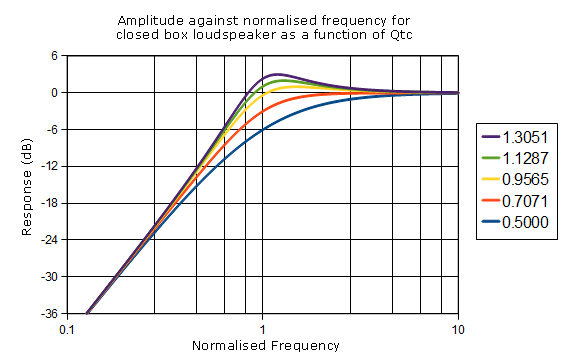
A good closed box driver has a Qts of 0.5. Put it in a cabinet, and the Qtc is higher. A reflex driver has a bigger magnet and a Qts near 0.38. In each case the optimum box is the Vas volume.
Arpeggio Loudspeaker
Now put it in a room, and things get more complicated. Room gain affects the overall result as Bill Coltrane says.
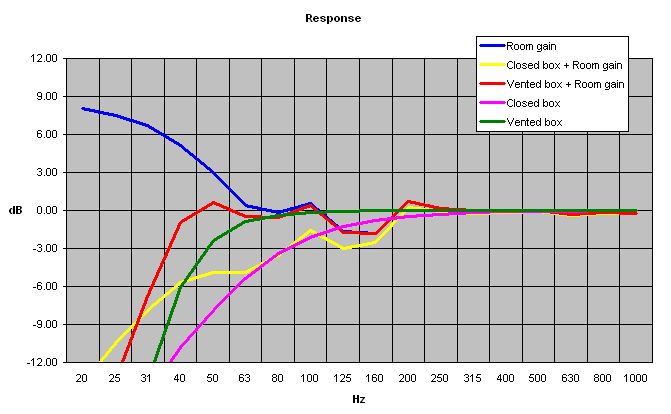
A big reflex in a small room sounds overwhelming.
Steeper filters have more group delay, so 24dB/octave reflex is slower than 12dB/octave closed box. Overdamped closed box where Qtc gets near 0.5 is best on transients, but worse on power handling:
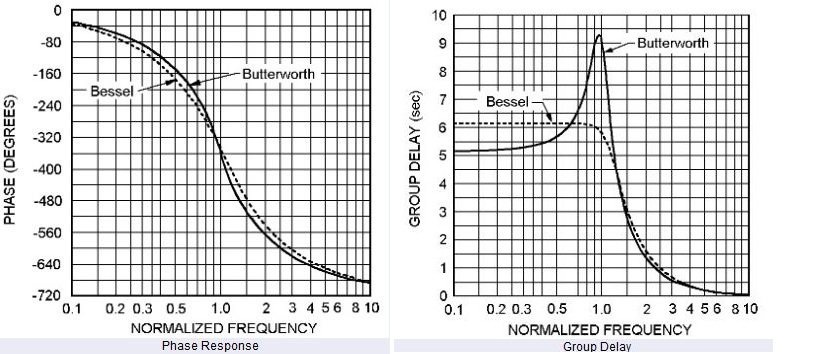
Most speakers look like this when you look overall:

You are seeing bass rolloff at the low end and bafflestep sloping there.
The Hilbert transform relates slopes, phase and group delay as differential coefficients. This is pure maths:
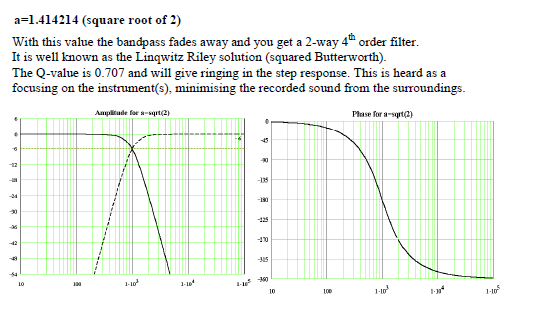
That's what I know.
A good closed box driver has a Qts of 0.5. Put it in a cabinet, and the Qtc is higher. A reflex driver has a bigger magnet and a Qts near 0.38. In each case the optimum box is the Vas volume.
Arpeggio Loudspeaker
Now put it in a room, and things get more complicated. Room gain affects the overall result as Bill Coltrane says.
A big reflex in a small room sounds overwhelming.
Steeper filters have more group delay, so 24dB/octave reflex is slower than 12dB/octave closed box. Overdamped closed box where Qtc gets near 0.5 is best on transients, but worse on power handling:
Most speakers look like this when you look overall:
You are seeing bass rolloff at the low end and bafflestep sloping there.
The Hilbert transform relates slopes, phase and group delay as differential coefficients. This is pure maths:
That's what I know.
Thanks for correcting my spelling Bill, pesky voice recognition. 😉
Less room interaction with OB
Less room interaction with OB
Last edited:
The listening room has orders of magnitude more influence, and that is what you actually hear.
Our hearing is very good at differentiating between direct sound and late reflections and room reverbaration. I have no problem differentiating between a clean dynamic drum sound and an overly compressed and lowpassed drumsound with a very dull sound and lack of transient attack in a normal living room, despite room reverberations and echoes.
Iow: the Q of a speaker is meaningless.
??? Is the power to weight ratio of an top fuel dragracer also meaningless ???
A high Q speaker is a resonator, incapable of acceleration and de-acceleration in respons to the signal it is being fed. You can only excite its own resonance. A low Q speaker is an electromechanical device that tracks the signal very closely without adding its own resonant behaviour to the signal being reproduced.
Our hearing is very good at differentiating between direct sound and late reflections and room reverbaration. I have no problem differentiating between a clean dynamic drum sound and an overly compressed and lowpassed drumsound with a very dull sound and lack of transient attack in a normal living room, despite room reverberations and echoes.
The listening room has orders of magnitude more influence, and that is what you actually hear.
??? Is the power to weight ratio of an top fuel dragracer also meaningless ???
Iow: the Q of a speaker is meaningless.
A high Q speaker is a resonator, incapable of acceleration and de-acceleration in response to the signal it is being fed. You can only excite its own resonance. A low Q speaker is an electromechanical device that tracks the signal very closely without adding its own resonant behaviour to the signal being reproduced.
Some of this stuff might be debateable. I prefer to stick to the science of the closed box enclosure. Which looks like this:
Two annoying things there. One is the Qtc of the bass and the slope. The other is bafflestep correction.
For sure, the room is the monster that messes stuff up. Strangely the room needs as much thought as the cabinet, it seems. The open-baffle people must admit it would be better if the backwave went into the next room, because you really can't absorb bass frequencies with any 1/8 wavelength stuff damping I can think of.
Even to absorb 1kHz echoes takes about 3" of rockwool lining in a room.
My own preference is closed box close to the wall to avoid needing much bafflestep correction. Smaller bass coils sound better for slam in the bass, IMO.
This one has a lively slam or attack on drums with a small bass coil. But most people say it has no bass! Trade-offs?
I don't mind slow reflex for that extra extension from a small cabinet and bass driver. But a big closed box bass has strengths too. Both must be better with the 6dB gain of wallmounting.
Or you mount the bass in the chimney breast, if you are fanatical, and some people did this. Probably wakes up the birds roosting on the chimney pots! 😀
So obviously there is two sides of the coin. And it seems with bass reflex its harder to model a closed box type transients.
I understand most of the concepts put out there but my two main questions are unanswered and its only those two answers that should help me understand what I am missing out.
If I making a bass reflex(using an existing design) a large PA cab and will be crossing over with subs. So essentially the PA cab will play down to possibly somewhere around 100hz. How do I tweak the transients of the PA cab?
One side of the coin is saying there is no such thing as transients and by cutting of the last 100hz you already have an improvement in transients as the slow bass is cut off, the other is saying extend port length and play with box volume? Now remember, I am not fussed about the sub woofer transients at the moment I am just curious about the PA cab. Does the extension of the port length have anything to do with the frequencies above the roll off?
I understand most of the concepts put out there but my two main questions are unanswered and its only those two answers that should help me understand what I am missing out.
If I making a bass reflex(using an existing design) a large PA cab and will be crossing over with subs. So essentially the PA cab will play down to possibly somewhere around 100hz. How do I tweak the transients of the PA cab?
One side of the coin is saying there is no such thing as transients and by cutting of the last 100hz you already have an improvement in transients as the slow bass is cut off, the other is saying extend port length and play with box volume? Now remember, I am not fussed about the sub woofer transients at the moment I am just curious about the PA cab. Does the extension of the port length have anything to do with the frequencies above the roll off?
Some of this stuff might be debatable. I prefer to stick to the science of the closed box enclosure. Which looks like this:
My own preference is closed box close to the wall to avoid needing much bafflestep correction. Smaller bass coils sound better for slam in the bass, IMO.This one has a lively slam or attack on drums with a small bass coil. But most people say it has no bass! Trade-offs?
Most of your concepts are the general consensus except for your input on the small bass coils. Can you please elaborate? I am keen to hear any opinion on how to get better slam and punch.
You are making me think about this... 😀
Let's start with your classic 8" bass closed box:
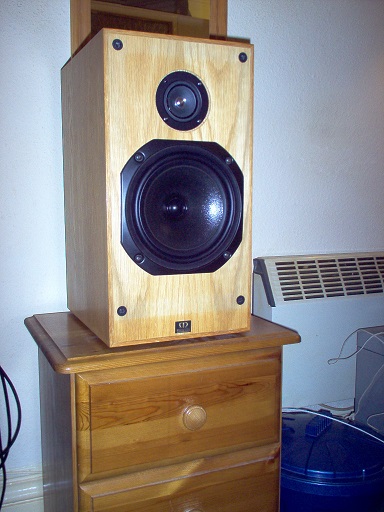
What I should have said is, IMO, smaller bass bafflestep filter coils give you more slam on drums.
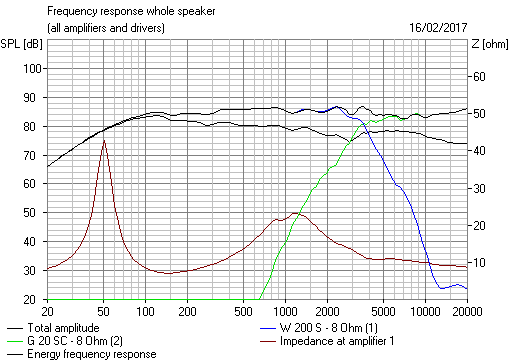
You can always spot closed box from the single peak in the impedance curve, here at 50Hz.
I don't mind reflex at all. An extra octave of bass from a given size box:
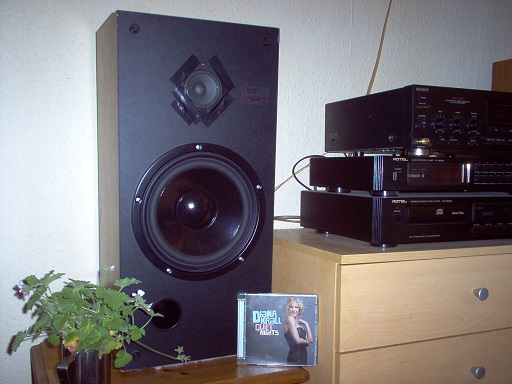
But it is a different sound.
Let's start with your classic 8" bass closed box:
What I should have said is, IMO, smaller bass bafflestep filter coils give you more slam on drums.
You can always spot closed box from the single peak in the impedance curve, here at 50Hz.
I don't mind reflex at all. An extra octave of bass from a given size box:
But it is a different sound.
Attachments
One thing that is typically neglected when talking about bass transient response is that the initial "slam" has little to do with the fundamental of the bass note. With a percussion instrument like a kick drum, the initial "slam" is a result of the impact with the drum skin and has little to do with the resonance of the drum. Similarly for a plucked bass note. This initial impact is rich in higher harmonics, above both the natural frequency of the instrument and the resonance of the woofer. The sustained decay of the note is where natural frequency of the instrument comes in. And, such instruments are generally pretty much undamped with very high Q. Thus, the electrical signal fed to the speaker is that of an impulse response of a highly undamped system, with long, oscillating tail. That the woofer system has a Q of between 0.5 and 1.+ is of little consequence in reproducing this signal with the exception of amplitude and phase. Simply put, if the fundamental of the instrument is close to the resonant of the woofer system, then a cycle or two of over hang due to the woofer Q is insignificant compared to the slow oscillatory decay of the input signal to the woofer. But the Q of the woofer will effect the amplitude of the with which that frequency is reproduced. Thus, a woofer with Q = 0.5 would reproduce the decay of a fundamental at the woofer's resonance with an amplitude -6dB compared to a woofer with a Q = 1. But since the woofer is driven by the electrical input, and if the input decays over say 100 cycles, then both woofer systems would reproduce the decay for 100 cycles. The woofer itself is not reproducing an impulse in which case it's natural decay would still only make a small difference, but rather it is reproducing a time dependent input of significant length. Higher Q woofer tend to "sound slow" because of the difference in the reproduction of the amplitude of the lower frequency components in the input signal.
Last edited:
That makes perfect sense, but what about electronic music. There may be no sustain with those signals. I built my cabinets so that the ports can be plugged, and comparing the sound of overdamped sealed to vented is night and day, even when the levels are eq matched with room correction. Many hold that the theory says that is impossible. To the op: I am no expert, but I would guess that if the main cab is crossed over reasonably close to its driver's fs, then a sealed alignment would be superior, but I would love to understand better why. Perhaps there are factors at play that have not yet been described by anyone. That is a hard possibility to consider for some 🙂
...Perhaps there are factors at play that have not yet been described by anyone. That is a hard possibility to consider for some 🙂
I have commented in a couple of other threads recently concerning the notion of the ears and brain as a phase-insensitive (second-order) spectrum analyser that is based upon Ohm's Acoustical Law (that the ears are insensitive to phase). This thread also seems relevant to the subject...
If we take an example of two pure tones, we can (slowly) vary the phase of one relative to the other and be unable to tell the difference audibly. Thus we conclude that the phase response is not relevant and that we only need concern ourselves with the magnitude response. Yet there are plenty of examples, such as the audible differences widely reported between linear and minimum phase EQ, that according to Ohm should not be audible. We are left seeking some form of caveat to Ohm's Acoustical Law (whilst acknowledging it still models the dominant cues in our auditory perception very well).
The comments in this thread and my other thread contributions concerning drums and plucked strings point to inter-spectral relationships in our perceptual models. That is to say, the resonance of a drum is bound in our perception to the spectral components of the impact that excited it. One analysis capable of linking such spectral patterns is the third-order "bispectrum". It is notable that the bispectrum was first suggested in an application such as this many decades ago, and whilst seemingly ignored thereafter, it has become widely used in other areas of cognitive analysis.
The bispectrum is an outstanding candidate for being incorporated in our auditory perception given, for example, its ability to discern a sound source separate from the acoustic environment that is relevant to some comments earlier in this thread, and its ability to discern one sound source from another of similar spectral content that is especially useful for those of us lucky enough to be at a cocktail party. (As far as I am aware, there are no good reasons why we should exploit the trispectrum and no good reason how we could exploit higher orders).
We might instead consider adding a time element to "Ohm's spectrum analyser" (possibly modelling the convergence of our cognitive apparatus on some prior learned auditory percept?) whereby we hone in on resonances as time after the initial transient passes. Effectively our spectrum analyser trades off time resolution for frequency resolution, and we end up with Ohm's steady-state spectrum analyser. Like so many aspects in audio engineering, this was described long ago by Michael Gerzon in his AES paper "Super-Resolving Short-Term Spectral Analyzers". Once again, this method requires spectral traces to be combined in some percept that allows us to distinguish transient "quality".
So whilst controlling loudspeaker fundamental Q-factors and other resonances (including those due to the acoustic environment) remain predominant in establishing audibly "clean" transients, there exists the possibility that other spectral elements might also influence our perception - at least in the short term. I am a proponent of phase compensation of the low frequency roll-off of a loudspeaker that (IMHO) delivers "cleaner" and "tighter" bass, that even accounting for group delay audibility thresholds, Ohm says should not be audible. Maybe Ohm lacked only high power processing tools, but it appears that simply examining the relationship between input and output spectra in an audio system may not be sufficient: There might be inter-spectral elements that second-order analyses are destined only to obscure.
Maybe we are making it more difficult than it is.
This is some, and no disrespect, reflex tripod mounted Genelec 8" bass plus horn 1" Disco speaker with electronic crossover:

What mucks up the timing is the steep slope on the reflex bass and the bafflestep. You can hear this stuff, as cspieker says.
My latest 8" plus 2" reflex speaker has many deep bass strengths.
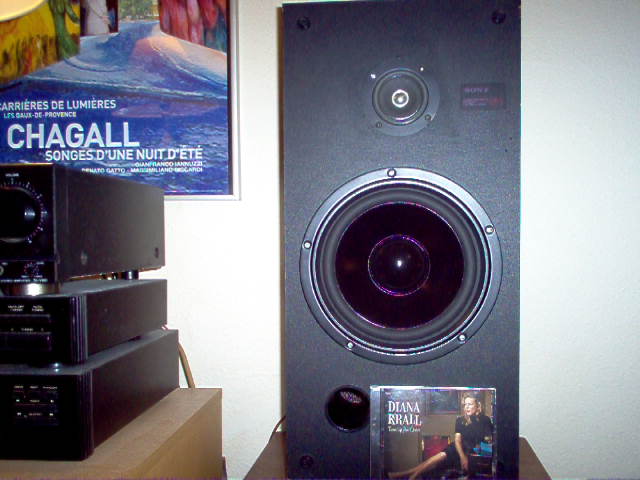
But if you play a tight three piece Rock Band like Dawes or Joe Jackson, or a Jazz band like Miles Davis on "Kinda Blue", what it doesn't do is get you tapping your feet. For that you must stuff some thick socks in the port and go overdamped closed box. I swear! 😀
Reflex sounds like the rhythm section is a quarter of a beat behind the sax and trumpet, and it's confusing. Technically 15ms is about 10 yards spatial displacement. I think the idea is the lead follows the rhythm, but I'm not a musician. But good musicians are extraordinarily sensitive to timing. I think it was Count Basie who said "It don't mean a thing if it ain't got that swing!".
Here's an old closed box speaker, the 12" plus 2" Wharfedale Melton 2, which I used to own:
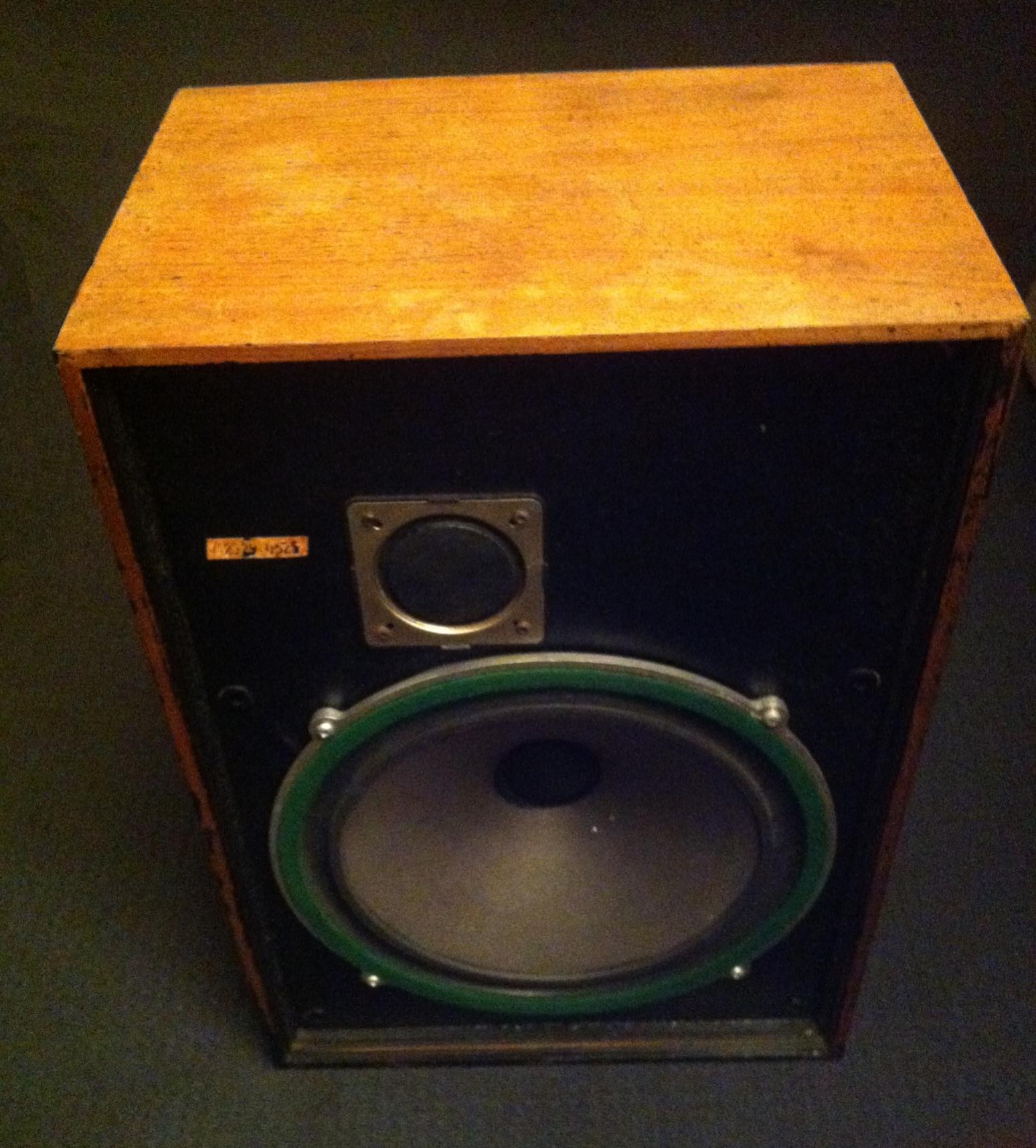
Everybody liked that speaker, despite some engineering difficulties getting a tweeter that could keep up with the bass. Great timing! 😎
This is some, and no disrespect, reflex tripod mounted Genelec 8" bass plus horn 1" Disco speaker with electronic crossover:
What mucks up the timing is the steep slope on the reflex bass and the bafflestep. You can hear this stuff, as cspieker says.
My latest 8" plus 2" reflex speaker has many deep bass strengths.
But if you play a tight three piece Rock Band like Dawes or Joe Jackson, or a Jazz band like Miles Davis on "Kinda Blue", what it doesn't do is get you tapping your feet. For that you must stuff some thick socks in the port and go overdamped closed box. I swear! 😀
Reflex sounds like the rhythm section is a quarter of a beat behind the sax and trumpet, and it's confusing. Technically 15ms is about 10 yards spatial displacement. I think the idea is the lead follows the rhythm, but I'm not a musician. But good musicians are extraordinarily sensitive to timing. I think it was Count Basie who said "It don't mean a thing if it ain't got that swing!".
Here's an old closed box speaker, the 12" plus 2" Wharfedale Melton 2, which I used to own:
Everybody liked that speaker, despite some engineering difficulties getting a tweeter that could keep up with the bass. Great timing! 😎
Last edited:
I built my cabinets so that the ports can be plugged, and comparing the sound of overdamped sealed to vented is night and day, even when the levels are eq matched with room correction.
In which way is it different? Which one do you prefer?
@system7; "Reflex sounds like the rhythm section is a quarter of a beat behind the sax and trumpet, and it's confusing". What if we replaced "Reflex" with "Resonance" - would the statement - as a generality - still hold true?
What if such resonance were placed coincidently at the lowest frequency one was ever expecting to reproduce. Would it not follow then that all higher frequencies would be on the "integrating" side of the resonance curve and consequently "lag" the input signal?
Higher Q systems, obviously imparting more such effect, due to a steeper slope of the resonance.
Could this not be corrected using a wide band time delay for the higher "sax / trumpet" frequencies - knock 'em back in time to sync with the delayed bass due to a higher resonant system? As a means to keep the resonant part, but with a more enjoyable result.
Regarding higher frequency cabinets and Q's, unsure if at these frequencies the "quarter of a beat lag" would be something perceptible - unless you're listening to "speed metal" ;'). However a high Q condition could still manifest as something else, just like crossovers can do regarding messing with the phase relationships within a given sound.
What if such resonance were placed coincidently at the lowest frequency one was ever expecting to reproduce. Would it not follow then that all higher frequencies would be on the "integrating" side of the resonance curve and consequently "lag" the input signal?
Higher Q systems, obviously imparting more such effect, due to a steeper slope of the resonance.
Could this not be corrected using a wide band time delay for the higher "sax / trumpet" frequencies - knock 'em back in time to sync with the delayed bass due to a higher resonant system? As a means to keep the resonant part, but with a more enjoyable result.
Regarding higher frequency cabinets and Q's, unsure if at these frequencies the "quarter of a beat lag" would be something perceptible - unless you're listening to "speed metal" ;'). However a high Q condition could still manifest as something else, just like crossovers can do regarding messing with the phase relationships within a given sound.
Last edited:
- Home
- Loudspeakers
- Multi-Way
- Back to Transients. Understanding "Q" and myths of bass

